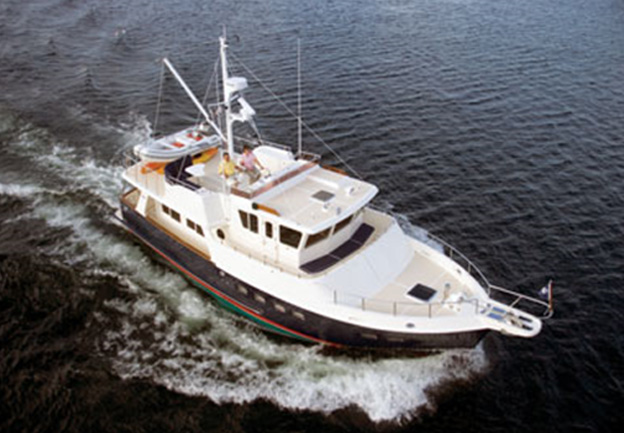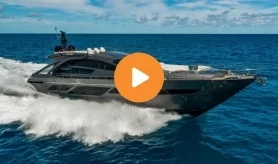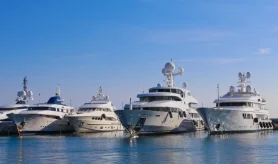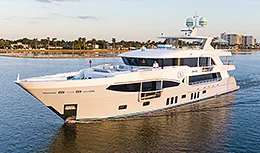- Alaskan Yachts
- Azimut Yachts
- Back Cove Yachts
- Beneteau Yachts
- Benetti Superyachts
- Bertram Yachts
- Boston Whaler
- Broward Yachts
- Buddy Davis Sportfish
- Burger Yachts
- Cabo Yachts
- Catamarans
- Carver Motoryachts
- Center Console
- Chris-Craft Yachts
- Cruisers Yachts
- DeFever Trawlers
- Dufour Sailboats
- Fairline Yachts
- Feadship Yachts
- Ferretti Yachts
- Formula Yachts
- Fountaine Pajot Cats
- Grady-White
- Grand Banks Trawlers
- Hargrave Yachts
- Hatteras Yachts
- Hinckley Picnic Boats
- Horizon Yachts
- Hydra-Sports
- Intrepid Boats
- Jarrett Bay Sportfish
- Jeanneau Yachts
- Kadey-Krogen Trawlers
- Lazzara Yachts
- Lekker Boats
- Luhrs Sportfish
- Marlow Yachts
- Maritimo Yachts
- Marquis Yachts
- Mazu Yachts
- McKinna Motoryachts
- Meridian Yachts
- Midnight Express
- MJM Yachts
- Mochi Craft
- Neptunus Motoryachts
- Nordhavn Trawlers
- Nordic Tugs
- Numarine Yachts
- Ocean Alexander Yachts
- Ocean King
- Offshore Yachts
- Outer Reef
- Oyster Sailing Yachts
- Pacific Mariner Yachts
- Palmer Johnson Yachts
48 Selene
![]()

Source: Matt Gumsey, Sea Magazine
A midsize cruiser with big appeal
I can probably count all the manufacturers of passage-making vessels on one hand. It’s an exclusive group of builders, whose boats are renowned for their stability, strength and ability to sip fuel while traveling huge distances in comfort.
There are dozens of other manufacturers whose boats, when properly equipped, can also do long-distance cruising, but their models aren’t designed to be this style of boat.
It has been interesting to watch the growth of Selene Yachts the last 10 years. The company has gone after the passage-making market, targeting its models to be long-range cruisers of the best kind. Its product line has expanded with models from 36 to 66 feet in production, and models more than 80 feet just on the horizon.
A Deep-Hulled Delight
Even while offering larger models to expand its market share and offer existing owners opportunities to “trade up,” there has also been tremendous growth in the midsize models of 43, 47 and 48 feet. Early boats were built out of a common hull mold that could be dammed to provide the three hull sizes, but demand has dictated that separate molds be developed so that hulls could be produced faster, cutting down lead time on these popular vessels while still providing plenty of “cure” time for the fiberglass layup.
Hull construction is sold fiberglass from the keel to 1 foot above the waterline. Coring material above this point helps reduce weight slightly. Early hulls were hand laminated, but current models are vacuum bagged, which has produced a thinner, denser and stronger hull. Interior bulkheads are foam cored and laminated with a vacuum infusion process that provides precise control of resin ratios, again saving weight and adding strength.
It seems odd to talk about weight savings in a boat that weighs 74,000 pounds when it is offloaded from the cargo ship, but while these are not lightweight boats, they are not filled with “dead” weight for weight’s sake. The boat is strongly built using modern construction techniques.
Hull shape is full displacement. This style of hull is preferred by Ocean cruisers for its stability and ease of moving through the water. The after 20 percent of the hull flattens out to allow the vessel to achieve speeds above hull speed. The 48-footer’s hull has been updated slightly for what Selene is calling its “Deep Hull” model. The draft is the same, but the hull shape has been extended aft to create an additional 18 inches of headroom in the engine room, and to allow longer fuel tanks that hold 1,300 gallons to be installed.
Quiet and Efficient
Fuel tanks, as well as water tanks, are constructed of fiberglass, and all the fuel lines are actually high-pressure hydraulic line with fittings at both ends. They are more than capable of handling the pressures at which fuel will flow through them, and easily replaced should the need ever arise.
The boat is powered by a single Cummins QFL 9.0 liter diesel that puts out 330 horsepower at 1800 rpm. You read that right — 1800 rpm. The engine turns slowly for longer life and less noise. In fact, readings at the engine room door at cruise are around 68 dB, and guests in the pilothouse were asked to be silent, because their conversations were being picked up by the meter.
The engine sits on a large, impressive-looking stainless steel mount that is bolted to the stringers. The engine installation is another area where Selene differs from other builders. Engines are extremely expensive for builders to buy, and they either invest capital or pay interest on the money to buy a boat’s power plant. This can also lead to boats being equipped with last year’s engine model.
Instead, Selene installs the engine just weeks before the boat is shipped. This is achieved by designing the salon deck hatches over the engine itself, and the same-sized hatch in the cabin top. This gives additional room during construction for rigging the boat so workers won’t stumble over the power plant.
Another aspect of Selene Yachts is that the company owns its own boatyard. Based in Taiwan, the manufacturing facility is owned by designer Howard Chen and family and is located in China about two hours from Hong Kong. Chen is not only the designer, but also owns the Selene company, and is partial owner of the dealerships on the West Coast, thus eliminating numerous layers of management and lowering production costs. It is not uncommon for a Selene to be hundreds of thousands of dollars less than competitors’ boats.
Attention to Detail
The Chen family also owns companies that produce stainless steel flatware, so many of the stainless steel parts are custom fabricated and carry the Selene name and logo on them, including hawse pipes and door sill panels. Each Selene also comes with a complete set of silverware with the logo on it. The pieces are heavy and well crafted.
The silverware will be kept in drawers that are hardwood with dovetail joinery and teak faces. In fact, teak abounds throughout the interior. Cabinetry work is at the high level that owners expect, and the fit and finish is excellent.
Galley counter tops are granite. One of the largest granite factories in the world is near the boatyard, and owners can pick their granite when they visit the plant to see their boat in production. Every buyer makes at least one trip to China to view his or her boat, and meet all the workers who are crafting the vessel. Many buyers make multiple trips to the plant during production.
The tabletops are teak with simple decorative inlays. Overall, the entire interior is very clean in design. The salon dining table expands and has a self-storing, folding leaf in its center. Seating for eight is possible with the leaf in place.
While some builders use complex inlay work or valances and other details, the Selene is more about form following function. Simple, clean lines accentuate the décor. Bamboo mini-blinds that are built by Selene are on the salon windows and allow complete control of light and views.
Decks inside are real teak and holly, not laminate. To control the quality of its woodwork, Selene has added a huge wood dryer for better control of moisture in the lumber. Teak grain and color are well matched, and the interior has a warm, inviting appearance.
Roomy Enough for the Long-Range Cruiser
To port ahead of the galley are two staircases. One goes up a few steps to the pilothouse, and the other goes down to the staterooms. There are two staterooms on the 48, the master forward with an en suite head and a walk-around queen berth on the centerline.
The head is adequately sized, with a huge shower stall (an optional full tub is available for this head). Storage in the master head is abundant, with plenty of drawers, shelving and hanging locker space to accommodate the longest cruises.
The second stateroom is to port aft of the master. This berth has an under/over arrangement, and both bunks slide out to become larger when needed. Some owners opt to turn this space into a den, and it is open to the passageway via a sliding bulkhead and door arrangement.
The second head, almost as large as the master, is to starboard. The combination washer/dryer to port in a cabinet at the base of the stairwell and the door to the engine room are on the aft bulkhead of this area.
Above the pilothouse there are forward-leaning windshields and plenty of room for electronics in the dash. Our test boat had Simrad electronics installed, with redundant systems including dual radar sounders and a display running Nobeltec.
There is no helm chair. The operator will stand at the helm for docking and tight maneuvering. Once under way, most captains set the autopilot and sit on the pilothouse lounge with a remote control for the pilot and the plotter. One step and the captain is back at the wheel.
Behind the pilothouse settee is a berth: perfect for relaxing at the dock with a breeze blowing through the pilothouse doors on either side, or for the skipper to nap while the mate mans the helm.
The flybridge is standard and is accessed from the pilothouse. This is a nicely sized area with room for a barbecue and dinette in addition to the bridge helm. Our test boat had a mast assembly for dinghy-handling chores. Options include a radar arch with davit.
The sidedecks are large and easy to navigate, and massive stainless steel rails surround the bow and Portuguese bridge. The bow pulpit contains dual anchor rollers and is wide enough to stand on for handling the tackle. Two large lockers provide plenty of space for ground tackle and rode.
Under way the Selene 48 is quiet. The Cummins cruises effortlessly and can run at its wide-open throttle of 1800 rpm for up to eight hours. At a sedate 750 rpm the boat glides along at just under 6 knots burning 1.3 gallons per hour. A fast cruise of 8 knots is achieved at 1200 rpm with the boat burning 3 ? gallons per hour.
Value, Service and Style
Selene has distinguished itself as a top competitor on three levels. Value for the dollar certainly tops the list, especially given the high-quality construction of the 48. But even more important is the amount of customization the builder will do, and how involved the buyer is in the building process.
Add to that the dealer support and training available, as well as an annual rendezvous, which is a great jumping-off point for Alaska cruises, and the ability to visit the plant and shake hands with the people building your boat, and it’s understandable how Selene has made such an impact on the passage maker market since its inception 10 years ago.



